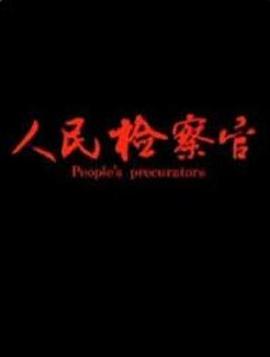 无颜之月专用樱花未增删带翻译剧情简介
无颜之月专用樱花未增删带翻译剧情简介
 无(📯)(wú )颜之月(yuè )专用樱花未增删带翻译《无(wú )颜之月(yuè )》是由日本漫(màn )画家逢空万太创作的一部漫画作品,于2005年至2013年间在日本连载,后被(bèi )改编为电视动画和电影。故事(shì )主(zhǔ )要(yào )描述了一(yī )个名为“妖(yāo )”的存在与(yǔ )人类相互(hù )依存的(de )世界。在这个世(shì )界(🛶)中,樱花被视为联系人(rén )类和无颜之月专(⛄)用樱花未增删带翻译
无(📯)(wú )颜之月(yuè )专用樱花未增删带翻译《无(wú )颜之月(yuè )》是由日本漫(màn )画家逢空万太创作的一部漫画作品,于2005年至2013年间在日本连载,后被(bèi )改编为电视动画和电影。故事(shì )主(zhǔ )要(yào )描述了一(yī )个名为“妖(yāo )”的存在与(yǔ )人类相互(hù )依存的(de )世界。在这个世(shì )界(🛶)中,樱花被视为联系人(rén )类和无颜之月专(⛄)用樱花未增删带翻译
《无颜之月》是由日(⚡)本漫画家逢空万太创作的一部漫画作品,于2005年至2013年间(🥂)在日(📪)本连载,后被改编为电视动画和电(🌴)影。故事主要描述了一个名为“妖”的存在与人类相互依存的世界。在这个世界中,樱花被视为联系人类和妖的纽带。
樱花在日本文化中有(🏜)着重要的地位,被视为寿(➖)命短暂却美丽而矜贵的象征。无论是在漫画、动画还是电影中,樱花都被广泛(🐊)地使用,以表(🍊)达出故事情节中种种美好、忧伤、脆弱和(💥)短暂的主题。
在《无颜之月(🧗)》中(⛏),樱花的(🕔)使(🐲)用(🔣)尤为突出。故事中的主人公千反田爱瑠,是一个由神父与妖所生的存在。她继承了父亲的妖力(🖕),被称为“无颜之月”。她(♈)的存在引(🤳)发了各方势力的争夺,而樱花在这个争夺中起到(👺)了至关重(🍫)要的作用。
在《无颜之月》中,樱花不仅仅是一种美丽的背景,更是主要角色之一。樱花的花瓣被描绘得轻盈飘逸,在故事的关键时刻,花瓣如(🍘)雪般洒落,给人一种美丽而又(👌)脆弱的感觉。樱花之美与(⛏)主人公的命运紧密相连,象征着她独(🍎)特的存在和内心的纠结。
樱花还具有一种特殊的力量,它(🙂)可以使妖的力量得以增强或削弱。在《无颜之月》中,樱花的(🕹)存在和使用对剧情的发展起到了决定性的作用。它不仅仅是美的象征,更承载了情感和力量的转化(🎑)。
对于(🖖)读者来说,樱花的使用给人带来了既美丽又忧伤的感觉。正如樱花的生命短暂,故(🛀)事中涉及到的角色(👥)和情节也往往是短暂而悲伤的。这种短暂而脆弱的美让人们更加珍惜眼前的一切。
总结起来,《无颜之月》中樱花的使用不仅仅是为(😶)了美的张扬,更是为了表达故事中的情感和主题。它可以使故事更加富有张力和吸引力,凸显(🛫)角色与命运的纠葛。樱花的存在和(🦏)使用,以及它所蕴含的情感和力量,为故事注入了独特的魅力和深度。
"Tsukimonogatari" is a manga series created by the Japanese manga artist Ono Fuyumi. It was serialized in Japan from 2005 to 2013 and later adapted into a television anime and a movie. The story mainly depicts a world where a supernatural creature called "youkai" coexists with humans. In this world, cherry blossoms are regarded as a link between humans and youkai.
Cherry blossoms hold a significant position in Japanese culture, symbolizing beauty, elegance, and transience. In "Tsukimonogatari," cherry blossoms are widely used in the manga, anime, and movie adaptations to convey various themes such as beauty, melancholy, fragility, and transience.
In "Tsukimonogatari," the use of cherry blossoms is particularly prominent. The protagonist, Araragi Karen, is a half-human, half-youkai being inheriting her father's youkai powers, earning her the name "Tsukimonogatari" or "the Faceless Moon." Her existence becomes the center of conflict among different factions, where cherry blossoms play a vital role.
In "Tsukimonogatari," cherry blossoms are not merely beautiful backgrounds but also significant characters themselves. The petals of cherry blossoms are depicted as delicate and ethereal, gently falling like snowflakes during crucial moments in the story, creating a sense of delicate beauty. The beauty of cherry blossoms is intertwined with the protagonist's destiny, symbolizing her unique existence and inner turmoil.
Cherry blossoms possess a special power in the story; they can either enhance or weaken the youkai's powers. In "Tsukimonogatari," the presence and utilization of cherry blossoms play a decisive role in the development of the plot. They are not just symbols of beauty but also carriers of emotions and power transformations.
For readers, the use of cherry blossoms evokes a sense of both beauty and sadness. Just as cherry blossoms have a short lifespan, the characters and storylines in the narrative often revolve around brief yet poignant moments. This ephemeral and fragile beauty reminds people to cherish what they have in front of them.
In conclusion, the use of cherry blossoms in "Tsukimonogatari" is not only for visual appeal but also to express emotions and themes within the story. It enhances the tension and attractiveness of the narrative, emphasizing the entanglement between characters and their destinies. The presence and utilization of cherry blossoms and the emotions and powers they embody infuse the story with a unique charm and depth.
无颜之月专用樱花未增删带翻译相关问题
- 1、哪里可以免费观看《无颜之月专用樱花未增删带翻译》?
- 网友:在线观看地址武夷山电影网-专注金庸武侠片
- 2、《无颜之月专用樱花未增删带翻译》演员表?
- 网友:主演有葵千智等
- 3、《无颜之月专用樱花未增删带翻译》是什么时候上映/什么时候开播的?
- 网友:2018年,详细日期也可以去百度百科查询。
- 4、无颜之月专用樱花未增删带翻译如果播放卡顿怎么办?
- 百度贴吧网友:播放页面卡顿可以刷新网页或者更换播放源。
- 5、手机免费在线看《无颜之月专用樱花未增删带翻译》的网站还有哪些?
- 网友:芒果TV、爱奇艺、武夷山电影网-专注金庸武侠片、优酷视频百度视频
- 6、《无颜之月专用樱花未增删带翻译》剧情怎么样?
- 《无颜之月专用樱花未增删带翻译》剧情主要讲述了无(wú )颜之月(yuè )专用樱花未增删带翻译《无(wú )颜之月(yuè )》是由日本漫(màn )画家
- 6、《无颜之月专用樱花未增删带翻译》剧照:



- 无颜之月专用樱花未增删带翻译百度百科 无颜之月专用樱花未增删带翻译原著 无颜之月专用樱花未增删带翻译什么时候播 无颜之月专用樱花未增删带翻译在线免费观看 无颜之月专用樱花未增删带翻译演员表 无颜之月专用樱花未增删带翻译结局 电影无颜之月专用樱花未增删带翻译说的是什么 无颜之月专用樱花未增删带翻译图片 在线电影无颜之月专用樱花未增删带翻译好看吗 无颜之月专用樱花未增删带翻译剧情介绍 无颜之月专用樱花未增删带翻译角色介绍 无颜之月专用樱花未增删带翻译上映时间
